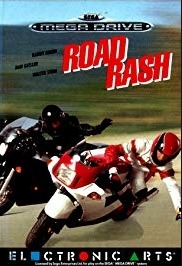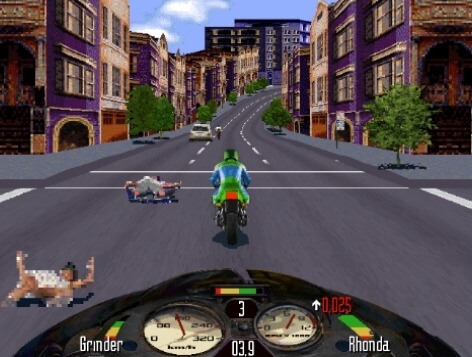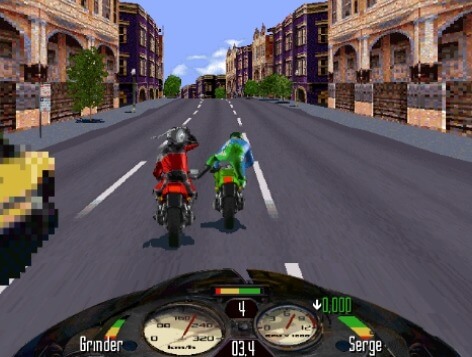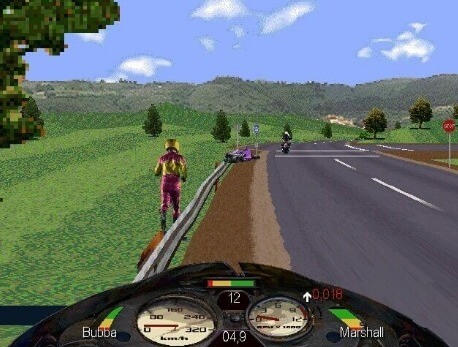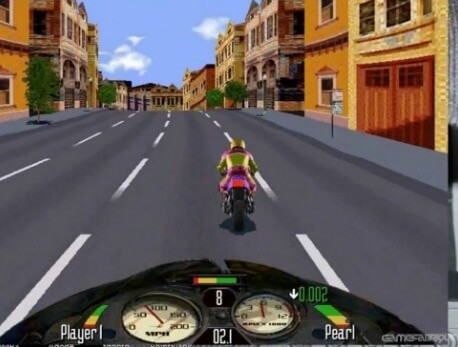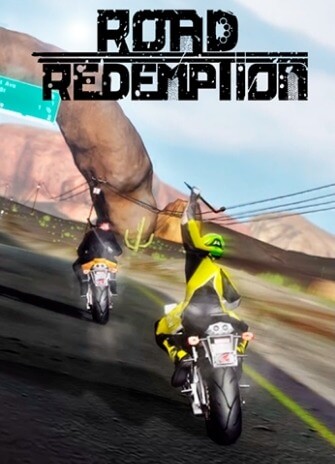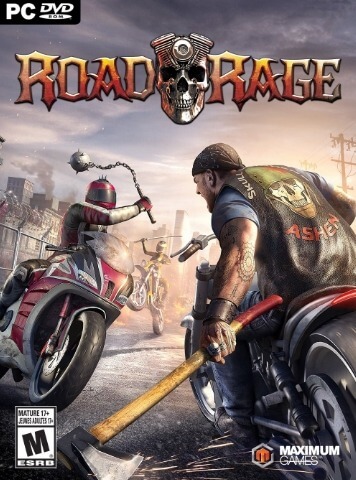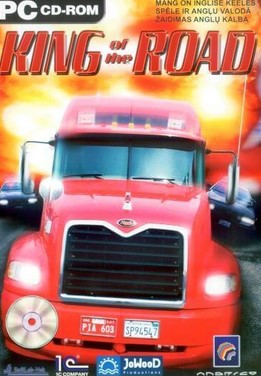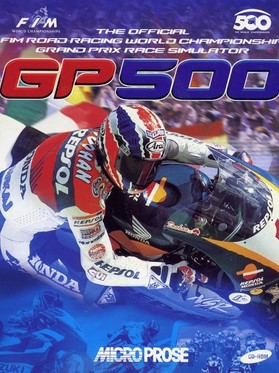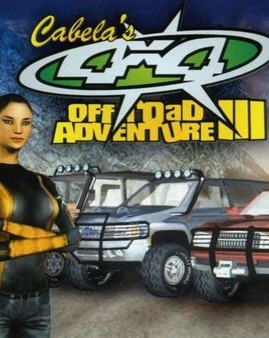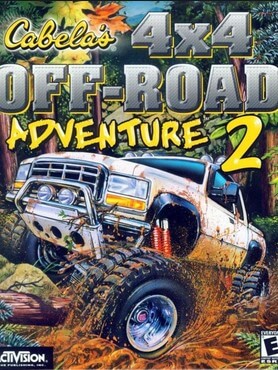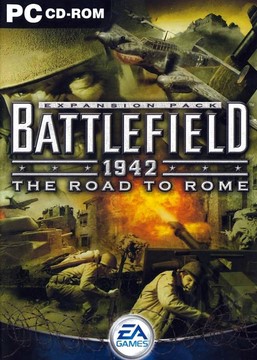Road Rash puts the player in control of a motorcycle racer who must finish in either third or fourth-place (depending on the version) or higher in a series of five road races to advance throughout the game's five levels. The game's races take place in a number of Californian locales, including San Francisco, the Sierra Nevada, Napa Valley and the Pacific Coast Highway. During a race, the player can brake, accelerate and attack neighboring racers. The player character will punch at the nearest racer with a default input, while holding a directional button during the input will result in either a backhand or a kick. Some opponents wield weapons such as clubs and chains, which can be taken and used by the player if the enemy racer is attacked as they are holding the weapon out to strike. The player racer can be ejected from their bike if they crash into an obstacle (such as cows, deer, cars and trees) or if they run out of stamina (shown in the bottom-left corner of the screen) due to fights with other racers. In this event, the racer will automatically run back toward their bike, though the player can alter their course and avoid incoming traffic with the directional buttons, or stand still by holding the brake input button. Opponents will likewise be ejected from their bike if their own stamina is depleted; the stamina of the nearest racer is visible within the bottom-right corner of the screen. In most versions, the color of the opponent's stamina meter changes as it decreases, while in the Sega CD version, it indicates the racer's level of aggressiveness toward the player.
The player character begins the game carrying $1,000 on hand. When the player wins a race, a cash prize is received and added to the player's balance. Between races, the player can view bikes for sale and potentially purchase a new bike with the money they have accumulated; the bike shop is available from the main menu in the 32-bit versions. Some bikes in the 32-bit versions are equipped with a series of nitrous oxide charges, which can provide a burst of speed if the player quickly taps the acceleration input button twice. In the 16-bit versions, the player will receive a password at the end of a successful race, which can be entered at a password entry screen in a subsequent session to maintain the player's progress; in the 32-bit versions, progress can be saved at the game's main menu. When the player wins a race on all five of the game's tracks, they will advance to the next level. With each subsequent level, the courses become longer and the opponent racers become more aggressive. When the player wins a race on each track in all five levels, the game is won.
The player's bike has its own "damage meter" between the player's and opponents' stamina meters, which decreases with every crash the player gets involved in. If the meter fully depletes, the bike will be wrecked, the player's participation in the current race will end, and a repair bill must be paid. Motorcycle cops also make sporadic appearances throughout the game's tracks. If the player crashes within the vicinity of a cop, the cop will end their participation in the current race by apprehending them and charging them with a fine. Repair bills and fines become more expensive with each subsequent level. If the player lacks the funds to cover either a repair bill or a fine, the game will end prematurely.
Road Rash is primarily single-player, but allows for two players to play intermittently against each other. The 32-bit versions feature two distinct modes of single-player gameplay: the central campaign "Big Game Mode" and a stripped-down "Thrash Mode", in which the player can race on any given track at any difficulty. In the Big Game Mode, the player takes on the identity of one of a selection of characters with differing statistics. Smaller characters accelerate more quickly, while larger characters have stronger attacks. Each of the characters start with a differing amount of money, and some characters come equipped with a weapon. Between races, the player can "schmooze" with other bikers and receive gameplay tips. The Windows version features an online multiplayer mode for up to eight human players connected via a modem or local network.
Reception
16 and 8-bit versions
The Genesis version of Road Rash was met with critical acclaim. KITS disc jockey Big Rick Stuart, writing for GamePro, gave the game a perfect score and called it "an instantly addictive motorcycle 16-bit game with a somewhat sick twist thrown in". MegaTech magazine said "Lots of races, lots of bikes, and plenty of thrills 'n' spills make this the best racer on the Megadrive!" Paul Glancey and Tim Boone of Computer and Video Games respectively described the game as a "beat 'em up on motorbikes" and "Super Hang-On with fists and clubs thrown in"; both reviewers noted that the graphics were convincing in their creation of the illusion of speed in spite of the fairly simple visuals, and Glancey added that the aggressive nature of the gameplay "broadens the enjoyment you get from Road Rash a great deal and makes you wonder why no-one thought of it before." Richard Leadbetter and Julian Rignall of Mean Machines both praised the convincing three-dimensional effect of the graphics, with Leadbetter additionally commending the "brilliant" sound effects and Hubbard's "great" music. Road Rash was the 9th best-selling Genesis title in the United Kingdom in February 1992. In the United States, Road Rash was the third highest-renting Genesis title at Blockbuster Video in April 1992, and the ninth highest-renting in the following month. At the time of its release, Road Rash proved to be EA's most profitable title. Mega placed the game at #8 on their Top Mega Drive Games of All Time. Game Informer ranked it as the 88th best game ever made in their 100th issue in 2001. The staff praised its more violent take on motorcycle video games.
The Amiga release of Road Rash was received positively. Neil Jackson of Amiga Format found the violent gameplay to be "just all-out thrash fun" that would "annoy everyone from the road safety crew to the Mary Whitehouse brigade", but added that the game "sounds like a kazoo and looks like a moped on an 8-bit". CU Amiga described the game as an "immensely playable" and "nicely violent" alternative to normal racing games, but noted that the Amiga version runs slower than the Genesis version and "doesn't deliver the feeling of charging down a road at 120mph." Road Rash was the fourth-highest selling Amiga title in the United Kingdom in its debut month, and remained among the top-30 best-sellers for five more months.
The Game Gear/Master System version also received positive reviews. Manny LaMancha of GamePro commended the simple controls, clean and clear graphics, ample audio and high challenge. Radion Automatic and Lucy Hickman of Mean Machines Sega praised the fast and easy-to-control gameplay, large sprites, and detailed and smooth graphics, though Hickman noted the absence of a simultaneous two-player mode as a drawback. Road Rash was the sixth highest-selling Game Gear title at Babbage's in its first month, and stayed within the top ten highest-selling Game Gear titles for the next five months.
The Sega CD version was met with a mixed reception. Bacon of GamePro commended the version as "uneven but exciting" and praised the amusing full-motion video cinematics, thrilling gameplay and grunge soundtrack, but was disappointed by the lower-quality graphics and lack of options compared to the 3DO version. Angus Swan and Steve Merrett of Mean Machines Sega commented that the graphics and gameplay were dated compared to Virtua Racing, but appreciated the emulation of the 3DO version's presentation visuals. Skid, Nick Rox and K. Lee of GameFan gave the Sega CD version scores of 70, 73 and 77; Skid and Nick both considered the version's animation and color palette to be a downgrade from the 3DO version, and Skid expressed distaste for the grunge soundtrack, while K. Lee felt that the game was a rehash of earlier series installments. Jeff Lundrigan of Game Players criticized the effect that the downgrade from the 3DO to the Sega CD had on the game's full-motion videos and backgrounds, and suggested that "the designers got too impressed with their own design. Instead of making Road Rash CD an improved version of Road Rash for Genesis, they decided to make it a scaled-down version of Road Rash for 3DO, and the poor little Sega CD isn't up to it." A reviewer for Next Generation also remarked that the Sega CD version is a major step down, and that while most of the downgrades are forgivable due to the Sega CD being a much less powerful system than the 3DO, the sparse scenery and low frame rate do not hold up even to games on the same system. He concluded it to be decent but less than what gamers would expect from the by-then established Road Rash series.
